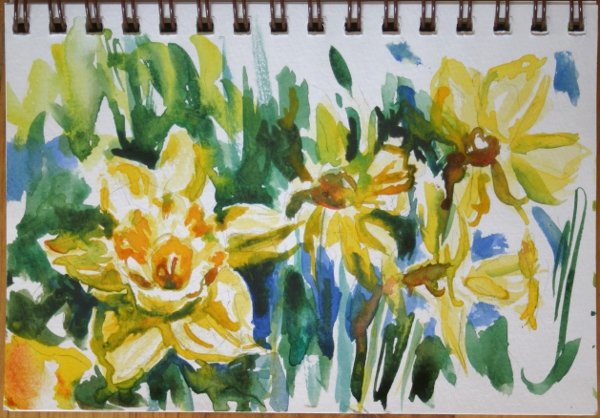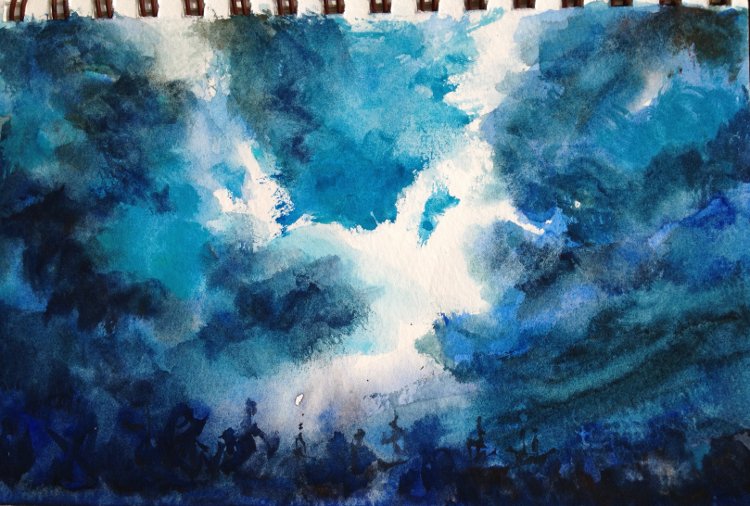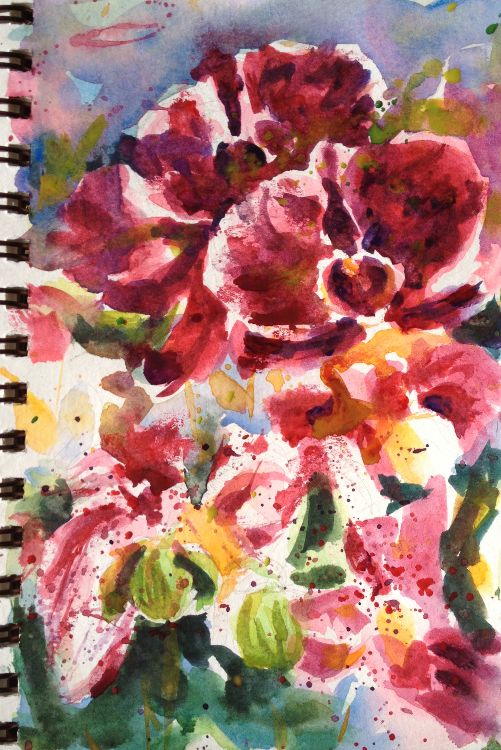Strathmore Visual Journal Watercolor Paper Review
Strathmore was started in Massachusetts in 1892. It's now owned by Pacon Corporation.
Strathmore manufactures a lot of paper in many different grades.
Their 500 Series for watercolorists is their premium grade, marketed as a professional artist grade watercolor paper. It comes in 4 versions:
Ready Cut, Imperial®, Aquarius II®, and Gemini. I ended up contacting Strathmore directly (I bought the paper, just asked for correct info)
)since there are a lot of conflicting descriptions out there.
For instance, several store sites say Imperial has 4 deckle edges, which is impossible if it's also made on a cylinder mold!
Readycut is hot or cold press precut in standard frame sizes. I won't be reviewing that here since we all know the convenience factor. Nice, but it's the paper's quality that matters, not cutting it!
Imperial is made from 100% cotton with 2 deckle edges. The paper was developed in 1949. The natural and synthetic sizing is meant to be extremely hard for easy lift out.
Aquarius II is made from cotton and synthetic fibers. The synthetic fiber is to allow an 80# paper to stand up to watercolor. Aquarius II has 2 deckle edges and is cold press finish. It's supposed to be ideal for combination drawing / watercolor.
Gemini is 100% cotton with 4 deckle edges - but made on a cylinder mould. Hmmm? Gemini Strathmore is developed for scrubbing, scraping and general rough treatment. 140# or 300# are available, but if you're really attacking it, go for the 300#!
Positives
It's a nice weight paper, handy size. The cover is strong enough to protect it some and hard enough to use for backing.
Negatives
It's a bland paper. It will hold up to about 3 washes, but very little scrubbing.
Disclaimer: Jennifer Branch Gallery is a participant in the Amazon Services LLC Associates Program, an affiliate advertising program designed to provide a means for sites to earn advertising fees by advertising and linking to amazon.com. I receive a small rebate for your entire order (starting at 4%) if you choose to purchase through Amazon. Most items can be bought multiple places and I highly recommend local art stores if you have one! Any other recommendation links I receive no compensation for.
These referrals help me support this website, and I thank you for any purchase you make through them. I will never recommend a product I have not used frequently and believe is the best tool for the purpose!
Value
Strathmore Visual Journal is a handly little journal. The finish of the paper is dull, it won't hold up to many layers. But it's a 140# watercolor paper journal that works. I think it's good value, especially considering there's little competition in 140# watercolor journals!




